Holleman Park Methodist Church
The story of the Methodist Church that was constructed on land donated by the Brickell family on the northern portion of the Holleman Park subdivision.
As one drives west along SW Thirteenth Street from South Miami Avenue toward West Brickell, the driver will be required to navigate a turnabout and if they choose to continue westward the road turns into SW Twelfth Street after passing beneath the I-95 overpass. There, between Triangle Park and the towering expressway, stands an abandoned building that seems like a relic from another era in Miami’s history. Though its architecture clearly reveals that it was once a church, its story remains a mystery to most who pass by.
The building at 349 SW Twelfth Street was erected during Miami’s building boom to serve a growing Methodist congregation on the city’s south side. The church rose on land generously donated by a prominent pioneer family, situated on the northern edge of a newly platted subdivision. This is the story of the Holleman Park Methodist Church, an enduring symbol of faith and community in the ever-changing fabric of the Brickell neighborhood.
Southside Methodist Church
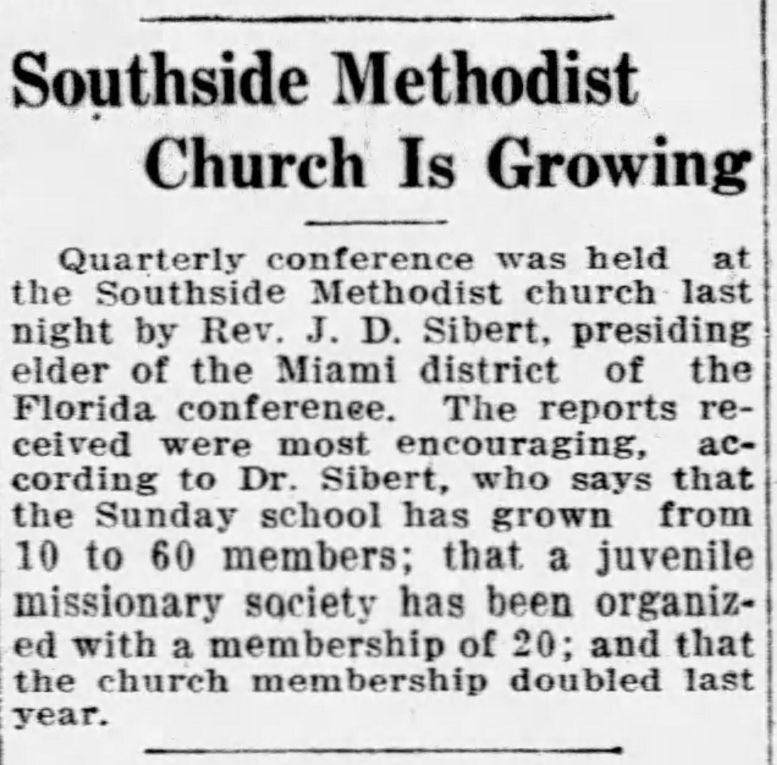
When the City of Miami was incorporated in July 1896, the area south of the Miami River was known simply as Southside, a quiet residential counterpart to the bustling commercial district developing to the north. Much of Southside’s land was owned by the Brickell family, whose name would later define the neighborhood that grew from their holdings.
In 1913, a small group of Methodists established a new congregation beneath a tent just west of the Florida East Coast Railway tracks along Southwest Eighth Street. Within a year, their numbers had grown enough to warrant the purchase of a lot and the construction of a modest chapel at the corner of SW Eighth Street and SW Fourth Avenue. Continued growth soon required an addition, which was completed in 1915.
At its founding, Reverend Wilson served as temporary pastor, while Albert Muro took on the role of Sunday School superintendent. In 1915, the church appointed its first official pastor, Reverend C. S. Eddington, coinciding with the completion of the congregation’s first expansion.
By 1922, Reverend G. H. York assumed leadership of the church and faced the challenge of accommodating an ever-expanding membership. That same year, the Brickell family donated a substantial parcel of land, measuring 100 by 150 feet, on the northern edge of a newly platted subdivision known as Holleman Park.
Before construction could begin, however, the church needed to sell its existing property to fund the new building. By the mid-1920s, the congregation sold its SW Eighth Street chapel with the agreement that services could continue there until the new church was complete. The anticipated cost of the new structure was $30,000, with an expected construction timeline of just over a year.
Holleman Park Methodist Church
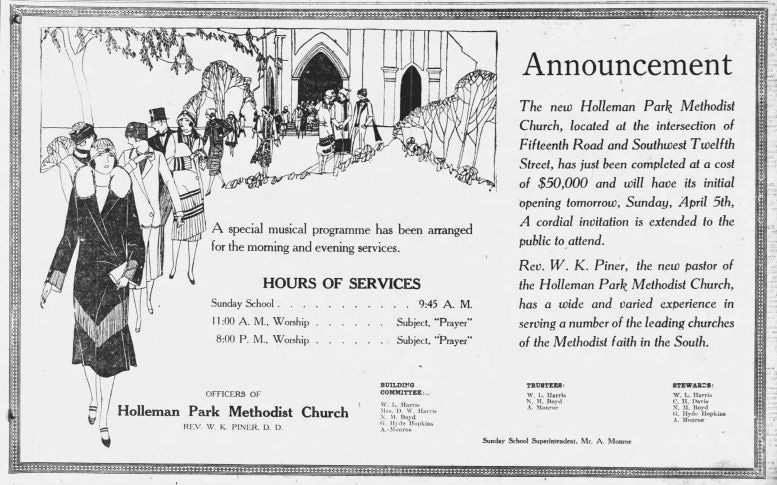
With proceeds from the sale of their SW Eighth Street property and the help of a loan, construction of the new church began in August 1924. The plans called for a building with a raised main floor, set seven feet above street level, and a full basement below. The main auditorium could accommodate up to 150 worshippers, while the basement featured a kitchen, dining room, social hall, classrooms, and lavatories.
By early April 1925, the building was completed, and the first service was held on Sunday, April 5th. The church was designed by architect E. A. Nolan and built by contractor W. A. Otter at a total cost of $50,000. Walter Harris, chairman of the building committee, supervised the project from start to finish.
Reverend W. K. Piner, who had been appointed pastor in January 1925, oversaw the final stages of construction and the church’s move into its new home. His parsonage, a residence provided by the congregation, was completed that July, just a short distance away on SW Eleventh Street. Shortly after settling into the new sanctuary, the congregation officially changed its name from the Southside Methodist Church to the Holleman Park Methodist Church, reflecting its new home within the Holleman Park subdivision.
Brickell Family Funeral in 1931
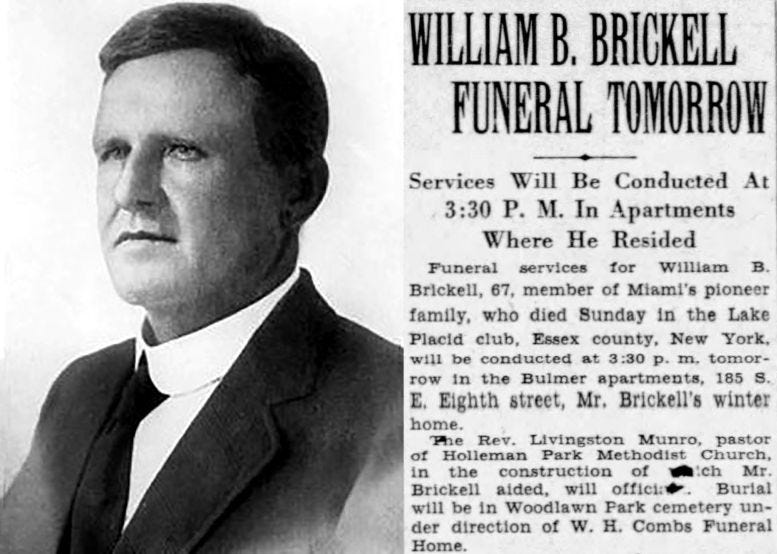
Within six years of its opening, the Holleman Park Methodist Church hosted the funeral of William Brickell III, eldest son of William and Mary Brickell, the pioneering family for whom Miami’s Brickell neighborhood is named. William III passed away in September 1931 in Lake Placid, New York, from complications related to asthma. His body was returned to Miami, the city his family helped to shape, for funeral services and burial.
In September 1939, Olive Brickell, the widow of William Brickell III, approached the Diocese of St. Augustine and offered to donate a large amount of acreage hosting today’s Saints Peter & Paul complex in return for the diocese building a church with one of its entrances lying even with the ground to allow her, and presumably others with ambulatory handicaps, an easier way to enter its sanctuary.
At this point in her life, she was older and did not want to navigate stairs to attend church. Presumably, she switched from the Methodist to the Catholic church in the years following her husband’s passing. She likely remembered how the Holleman Park building was elevated from the street level and required their members to climb stairs to reach the auditorium for Sunday service.
Membership Peaked in the 1950s
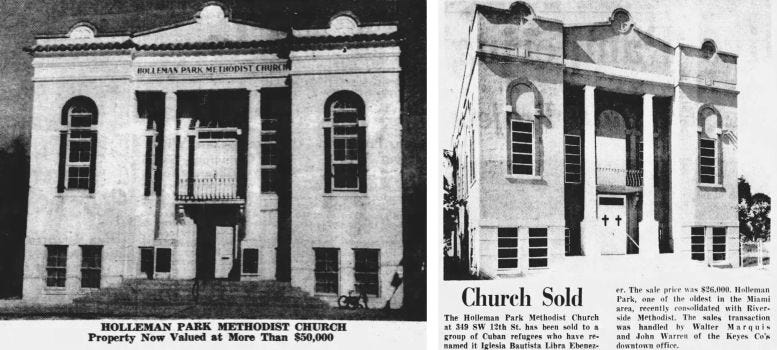
The onset of the Great Depression brought difficult years for the Holleman Park Methodist Church, which struggled under the weight of the loans incurred during the construction of its new facility. During this period, Reverend L. Munro, brother of the church’s first Sunday School superintendent, served as pastor and worked diligently to retire the debt by the time his pastorate ended in 1933.
It was not until Reverend M. C. Cleveland’s tenure, from 1939 to 1942, that the church building was formally dedicated. Under his leadership, the congregation also purchased land at 1130 SW Third Avenue for the construction of a new parsonage, a residence for the pastor. When Reverend W. E. Rowell succeeded him in 1943, he oversaw the final payments that cleared the debt on the parsonage by the following year.
Although the church’s finances had stabilized by the mid-1940s, membership began to decline toward the end of the decade. Journalist Joseph Faus of the Miami Daily News described the postwar years as a “period of inertia while the church drifted into decline.”
That trajectory changed with the arrival of Reverend Walter T. Cross, who delivered his first sermon on Easter Sunday, April 9, 1950. His leadership sparked a renewed sense of purpose and vitality within the congregation. Over the next several years, membership increased by more than fifty percent, reaching a peak of over 300 worshippers by 1953. Faus described this revival as “the beginning of the resurrection” of the Holleman Park Methodist Church. Yet, this period of growth would prove short-lived; within a decade, the construction of a new expressway would dramatically alter the church’s surroundings and its future.
Holleman Park and Riverside Churches Merge
The construction of the I-95 expressway through the Brickell neighborhood in the early 1960s had a profound impact on the Holleman Park Methodist Church. The right-of-way for the overpass consumed the church’s parking lot, and the highway’s embankments came to rest just a few feet from the eastern wall of the chapel. While the expressway contributed to declining attendance, shifting neighborhood demographics also played a role. By the early 1960s, the congregation had dwindled to roughly half its size from the 1953 peak.
In May 1965, the Holleman Park congregation made the difficult decision to merge with Riverside Methodist Church at 985 NW First Street. Church leaders handed over the keys to the Riverside trustees, who then sold the Holleman Park building to a group of Cuban refugees. This new congregation established the Ebeneezer Free Will Baptist Church in the former Methodist chapel. The building was sold for $26,000 in August 1965, a steep discount from its value of over $50,000 just ten years earlier.
The Church Building Today
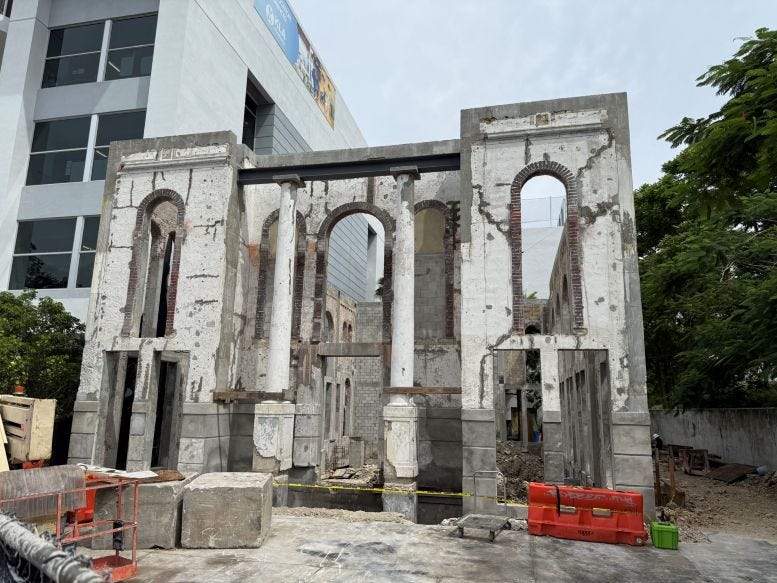
The Cuban Baptist congregation occupied the building at 349 SW Twelfth Street until 1998. Since then, the structure has largely stood empty, awaiting its next chapter. While the building lacks formal historic designation, its small lot, squeezed against the expressway, makes demolition and redevelopment a challenging prospect.
The property was most recently sold in 2017 to L&M Brickell LLC, a company specializing in the installation of flooring, impact windows, and doors. The 65 by 150-foot lot and the building were purchased for over $1.5 million. Today, the structure appears to be undergoing either renovation or demolition, though the exact scope of the work is unclear.
There is hope that the building, or at least its enduring skeleton, might be given a second life, preserved and adaptively reused for a purpose beyond its original mission. Only time will reveal the future of the remaining vestiges of the historic Holleman Park Methodist Church.
Resources:
Miami Metropolis: “Southside Methodist Church is Growing”, May 20, 1915 (page 2).
Miami Metropolis: “Begin Building of New Church for Methodists”, August 22, 1924 (page 3).
Miami Metropolis: “Auditorium of Church to Seat Over 150 Persons”, August 29, 1924 (page 7).
Miami Daily News: “Brickell Funeral Set for Tomorrow”, September 9, 1931.
Miami Daily News: “Rev Cross Revitalizes Holleman Park Methodists”, January 10, 1953 (page 13).
Miami Herald: “Churches Merging – All Because of Expressway”, by Adon Taft, May 28, 1965 (page 31).
Miami News: “3 Ways to Happiness”, September 4, 1965.
Miami Herald: “Hard Times Force Some Churches to Fold”, Adon Taft, April 1, 1974 (page 166).



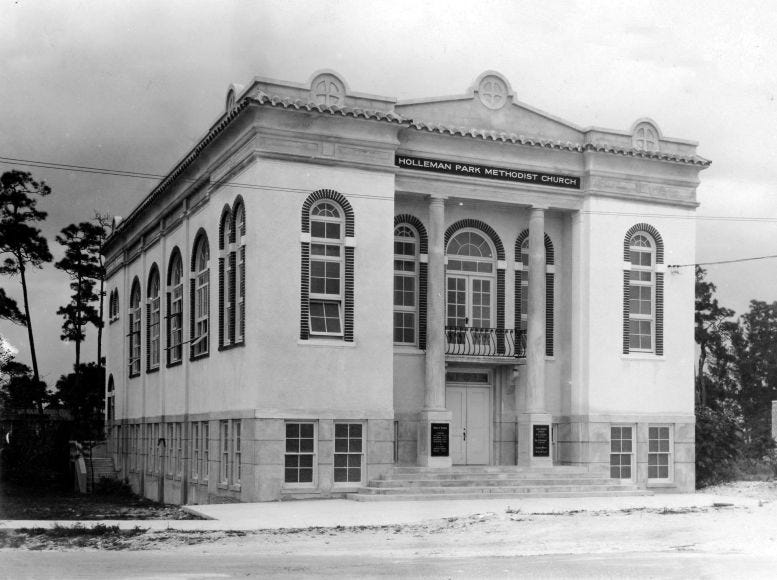
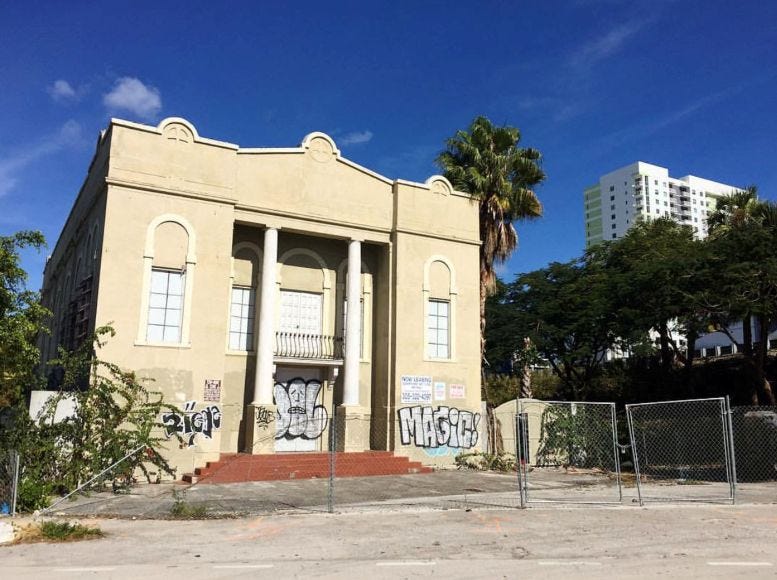
Incredible...the rich history and grand architecture of the Miami of old compared to today! So sad.
Fascinating article. I had no idea this building even exists. Let's hope it'll be somehow incorporated into what's planned next, unlikely as it may seem.